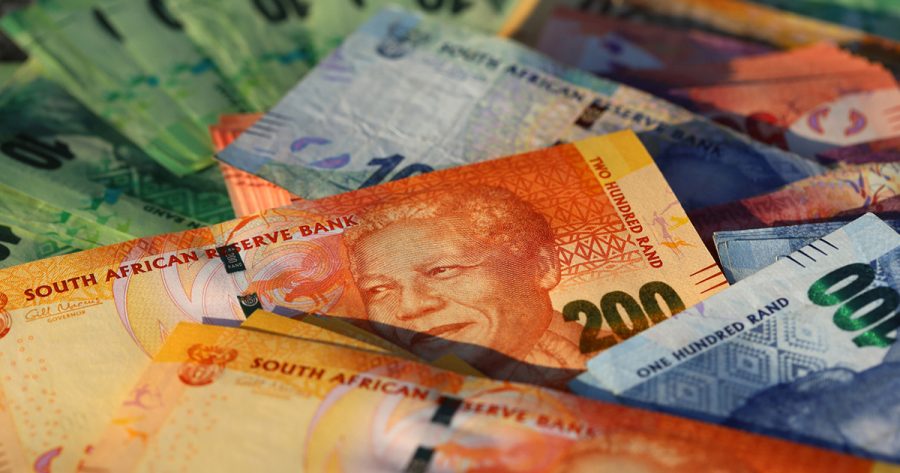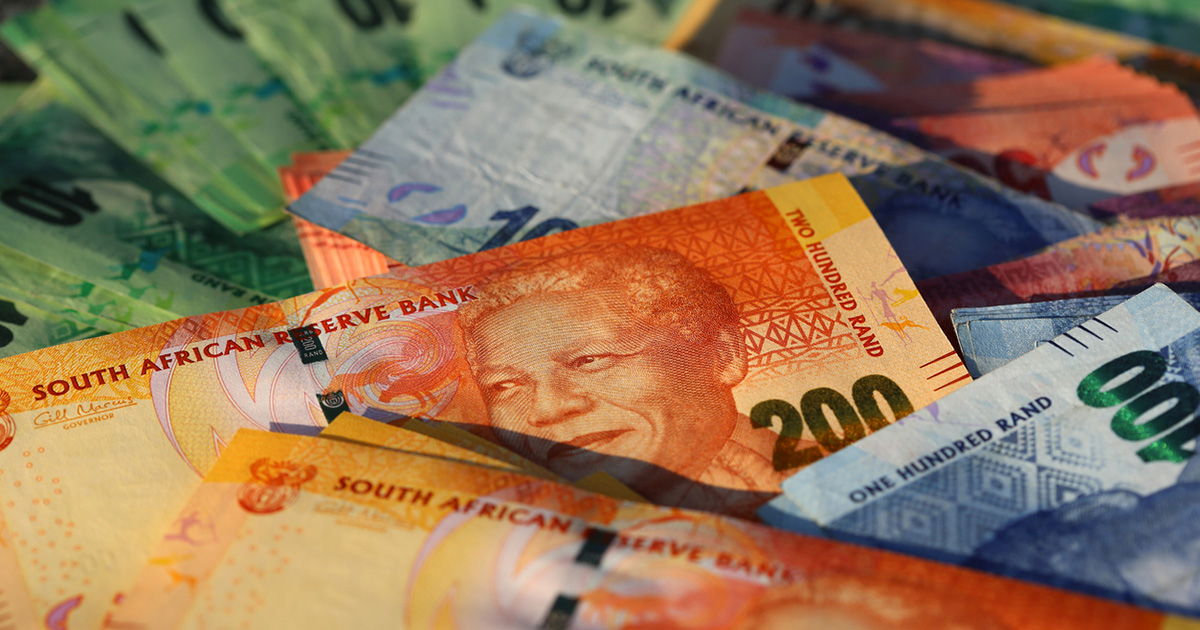
South African rand recovered: U.S. stocks slip, oil surges
The South African rand recovered some losses on Friday after slumping to a four-month low earlier on the back of positive U.S. payrolls data.

Reuters: The South African rand recovered some losses on Friday after slumping to a four-month low earlier on the back of positive U.S. payrolls data.
SOUTH AFRICAN RAND RECOVERED
At 1328 GMT, the South African Rand traded at 19.5150 against the dollar, near its previous close of 19.5125. It earlier touched 19.6400 – its lowest since June – after non-farm payrolls data out of the United States showed a larger than expected increase in jobs for September. The dollar last traded around 0.3% stronger against a basket of global currencies.
Analysts had earlier warned that encouraging U.S. employment figures would bolster the dollar and adversely impact the rand. The South African Rand has lost about 12.7% against the greenback since the start of the year. “The South African Rand has remained very weak this year, far removed from its fair value of closer to R15.00/USD. Substantial US dollar strength has been a key reason,” said Investec economist Annabel Bishop in a research note.
Locally, South Africa’s net foreign reserves fell to $54.980 billion by the end of September from $55.444 billion in August, central bank data showed on Friday. On the Johannesburg Stock Exchange, the blue-chip Top-40 index last traded around 0.4% higher. South Africa’s benchmark 2030 government bond was slightly stronger, with the yield down 4 basis points to 10.965%.
U.S. DOLLAR
Reuters: The safe-haven dollar and Japanese yen edged higher on Monday as violence in the Middle East spooked markets, while a blowout U.S. jobs report gave the greenback a further leg up. The Israeli shekel tumbled more than 3% to an almost eight-year low of 3.9880 per dollar early in the Asian session, before trimming some of those losses in volatile trade after the Bank of Israel announced it will sell up to $30 billion of foreign currency in the open market to maintain stability. The shekel was last roughly 1.7% lower at 3.9069 per dollar.
ALSO READ: Could the South African Rand hit R25 to the Dollar?
Risk sentiment was fragile after Israeli forces clashed with gunmen from the Palestinian group Hamas over the weekend, hours after the militants launched a surprise attack on Israel in the deadliest day of violence in the country for 50 years. That kept the Japanese yen – a traditional safe-haven currency – in bid, sending the risk-sensitive Australian dollar sliding nearly 0.8% to 94.61 yen.
The euro similarly fell roughly 0.4% to 157.45 yen in thinned Asian trade, with Japan closed for a holiday. Against the dollar, the yen last bought 149.21. “As you’d expect, there’s a lot of uncertainty out there this morning in the markets,” said Tony Sycamore, market analyst at IG Australia. “Where some of these risk-aversion moves are going to play out in the currency space, the dollar will remain bid and the yen should start to see some more support coming in, but potentially, that’s more on the crosses.”
ALSO READ: Who is the richest person in the world today? Top 10 list – 9 October 2023
Elsewhere, the dollar was likewise broadly higher, sending sterling down 0.31% to $1.2194. The euro lost 0.32% to trade at $1.0553. The Australian dollar, seen as a proxy for risk appetite, slid 0.59% to $0.6347, while the New Zealand dollar edged 0.36% lower to $0.5968. “There is demand for the U.S. dollar across the board, just because of that safe haven,” said IG’s Sycamore.
The dollar index was last 0.1% higher at 106.33, drawing additional support from Friday’s data showing U.S. employment increased by the most in eight months in September, potentially setting up for a higher-than-expected inflation print later this week. “The resoundingly strong employment report will likely keep the Federal Open Market Committee on guard as it watches for signs that a tight labor market could prevent inflation from returning to 2% on a sustained basis,” said economists at Wells Fargo.
“Another rate hike before the end of the year is a possibility, but for now our base case remains that the last rate hike of the tightening cycle occurred in July.” Market pricing shows a roughly 78% chance that the Federal Reserve will keep rates on hold at its November policy meeting. In Asia, China returns from its Golden Week holiday. The country’s foreign exchange reserves fell more than expected in September, official data showed on Saturday. The onshore yuan held steady and last bought 7.2960 per dollar.
ALSO READ: Fuel price LATEST: GOOD signs for petrol, diesel in November 2023
BRITISH POUND
Reuters: Sterling ticked a fraction higher against the dollar on Friday ahead of key U.S. jobs data, while traders continue to digest the possibility that the Bank of England’s might be done with its most extensive rate-hiking cycle in decades. At 0948 GMT, the pound was 0.1% higher against the dollar at $1.2197, and virtually flat against the euro at 86.50 pence. The pound has weakened against the dollar in recent weeks, as a stronger-than-expected U.S. economy led to bets that U.S. interest rates could rise further. Conversely, the Bank of England seems to be nearing the end of its tightening cycle.
Market players said the pound is likely to stay in a holding pattern until key U.S. non-farm payroll data due later. A reading above expectations would reinforce the idea of a further Fed rate hike and send the dollar higher, said Nicholas Rees, FX market analyst at Monex Europe. “A downside miss would raise worries that the U.S. labour market is beginning to crumble under the pressure of Fed tightening, likely seeing flows into the dollar on a haven bid,” said Rees. “..in our view, the path for a lower dollar and therefore higher cable looks to be a narrow one this afternoon.”
A business survey on Wednesday showed British services companies suffered a less severe downturn in September than first feared, reflecting a surprise fall in inflation and the Bank of England’s decision to leave interest rates on hold. “The upwards revision to the September flash PMIs suggests the UK is not heading into recession for now, something likely to be confirmed in the upcoming GDP print,” said Rees. August GDP numbers for the UK will be released on Thursday.
Traders are now placing a 73% chance of no change in rates at the Bank of England’s next policy meeting on November 2 – a continuation of the pause at the last meeting – and an outside chance of a 25 bps hike. Elsewhere, data from mortgage lending Halifax showed on Friday that British house prices fell at the fastest pace since 2009 over the 12 months to September, echoing other measures of the housing market which have cooled amid rising interest rates. The next key data release for the pound will be UK jobs data on October 17, and CPI data the following day.
ALSO READ: Newspaper front pages from around the world, 9 October 2023
GLOBAL MARKETS
Reuters: U.S. stock futures slid on Monday as the military conflict in the Middle East lifted oil and Treasuries, while the sizzling September U.S. jobs report raised the rate stakes for inflation figures later in the week. Holidays in Japan and South Korea made for thin conditions but the initial bid was for bonds and the safe harbours of Japanese yen and gold, while oil prices climbed by more than $3 a barrel. The Israeli shekel initially sank to its lowest since early 2015 at 3.9880 per dollar, prompting the country’s central bank to offer to sell up to $30 billion for shekels.
ALSO READ: Oil prices jump as Hamas attack on Israel fuels supply fears
The prompt action helped the currency pare losses to 3.9050, while the central bank also said it would provide liquidity to markets as needed. “The risk is higher oil prices, a slump in equities, and a surge in volatility supports the dollar and yen, and undermine ‘risk’ currencies,” said analysts at CBA in a note. In particular, there was a chance oil supplies from Iran might be disrupted, they added.
“Given the tightness already facing physical oil markets in Q4 2023, an immediate reduction in Iran’s oil exports risks pushing Brent futures above $US100/bbl in the short term.” Israel pounded the Palestinian enclave of Gaza on Sunday, killing hundreds of people in retaliation for one of the bloodiest attacks in its history when Islamist group Hamas killed 700 Israelis and abducted dozens more.
ALSO READ: Corrupt SASSA officials have cost the country R50 million
The danger of disruptions to supply was enough to drive Brent up $3.14 to $87.72 a barrel, while U.S. crude climbed $3.28 to $86.07 per barrel. Gold was also in demand, rising 1.1% to $1,852 an ounce. In currency markets, the yen was the main gainer though moves were modest overall. The euro eased 0.3% to 157.37 yen, while the dollar dipped 0.1% to 149.14 yen. The euro also eased 0.3% on the dollar to $1.0552.
The cautious mood was a balm for sovereign bonds after recent heavy selling and 10-year Treasury futures rose a sizable 12 ticks. Yields were indicated around 4.74%, compared to 4.81% on Friday. Any sustained rally in oil prices would act as a tax on consumers and add to inflationary pressures, which weighed on equities as S&P 500 futures shed 0.8% and Nasdaq futures lost 0.7%. EUROSTOXX 50 futures slipped 0.4% and FTSE futures 0.1%.
While Tokyo was closed, Nikkei futures were trading down 1.0% and near where the cash market ended on Friday. MSCI’s broadest index of Asia-Pacific shares outside Japan went flat, as Chinese blue chips dropped 0.6% on their return from holidays. The strength of the U.S. jobs report had fed expectations that interest rates would have to stay high for longer, with another major test looming from data on September consumer prices.
Median forecasts are for a 0.3% gain in both the headline and core measures, which should see the annual pace of inflation slow a touch. Minutes of the last Federal Reserve meeting are due this week and should help gauge how serious members were about keeping rates up, or even hiking again. Early Monday, markets seemed to think developments in the Middle East would lean against further Fed hikes, and perhaps hasten a policy easing next year.
ALSO READ: 6 things to consider when joining a STOKVEL
Fed fund futures now implied an 86% chance rates would stay on hold in November, and had around 75 basis points of cuts priced in for 2024. China also returns from holiday this week with a deluge of data including consumer and producer inflation, trade, credit and lending growth. The news from the Middle East could sour the start of corporate earnings season with 12 S&P 500 companies reporting this week including JP Morgan, Citi, and Wells Fargo.
Goldman Sachs sees 2% sales growth, with 55 basis points of margin contraction to 11.2% and flat EPS relative to last year. “Near-trend economic growth and moderating inflation pressures will support modest sales growth and slim margin improvement,” Goldman analysts aid in a note. “However, substantial margin expansion is unlikely given the ‘higher for longer’ interest rate regime, resilient wage growth, and AI investments among some tech firms.”
Published by the Mercury Team on 9 October 2023
For more news on global and local market performance, follow our business and finance page.
